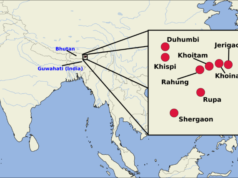A new study by LSE’s International Inequalities Institute shows that women make up a smaller and smaller fraction of those with high incomes, the closer you get to the top. Women have been increasing their representation in the top 10 per cent, but progress has been much less at the very top 0.1 per cent.
Tony Atkinson (Oxford University and LSE), Alessandra Casarico (Bocconi University, Milan) and Sarah Voitchovsky (Graduate Institute, Geneva and University of Melbourne) use tax data from eight countries since the 1980s or earlier to look for the first time at the gender composition of those with top incomes from all sources, not just from earnings.
They find that:
- Women are less than a third of those in the top 10% in all countries, and as few as 22 per cent in Norway.
- Women are less than a quarter of the top 1% in all the countries, and less than 18 per cent in Norway, Demark and the UK.
- Only 9 per cent of the top 0.1% in the UK are women, the lowest of the six countries that can be compared.
- The presence of women at the top has generally increased over time (although not in Australia), but less rapidly at the very top.
- Over time the speed of the fall in the presence of women moving from the top to the very top has become more marked – there appears to be a ‘glass ceiling’ at the very top, despite some improvements for the top 10%.
- In the UK while the share of women in the top 10% and top 1% has risen since the 1990s, the share of women in the top 0.1 per cent was little changed.
The research shows that it is important to look not just at the gender gap in pay from work, but also at who benefits from other kinds of income, such as dividends and interest.
Alessandra Casarico said: “Women now make up more of the top income groups, but they still are a distinct minority and they become rarer the higher one climbs. Composition of income is important: In the old days, the rich were those with property; they have been replaced by CEOs and entrepreneurs, among whom women are not well represented.”
Find your dream job in the space industry. Check our Space Job Board »
“Top incomes and the gender divide,” International Inequalities Institute Working paper No.5, will be available at:http://www.lse.ac.uk/InternationalInequalities/publications/Publications.aspx
Source: London School of Economics (LSE)










